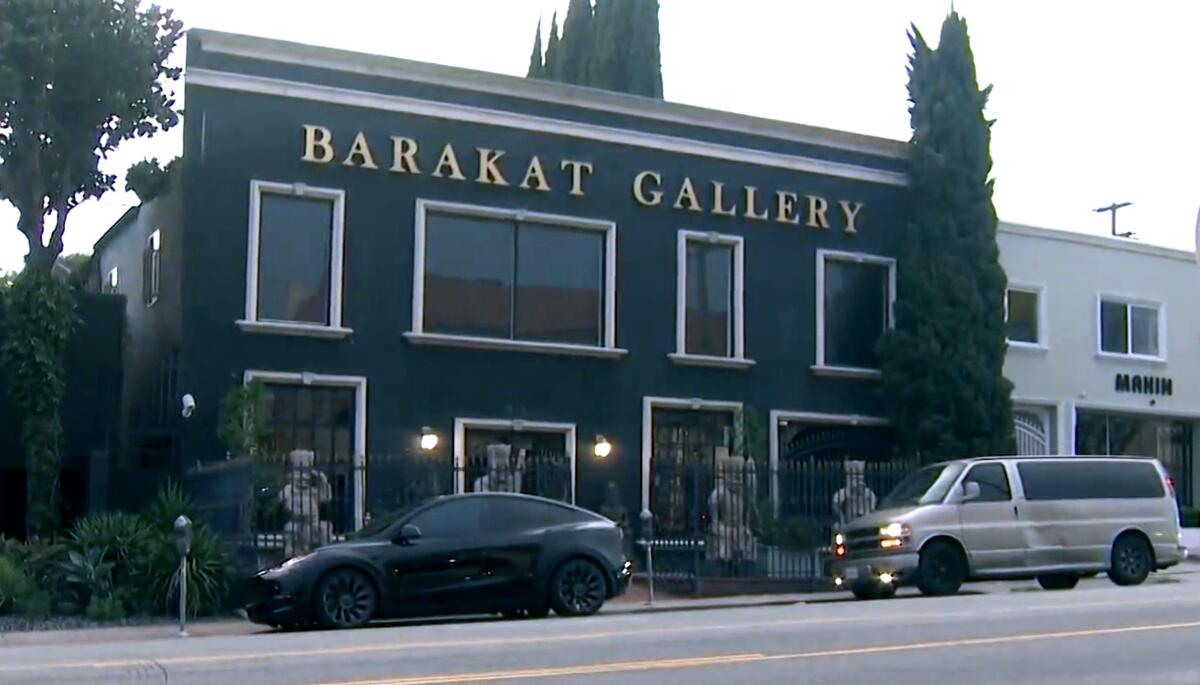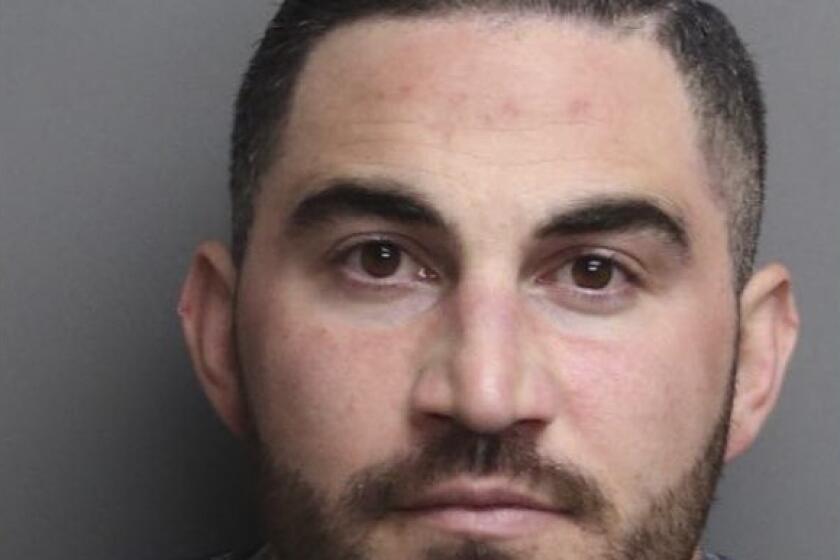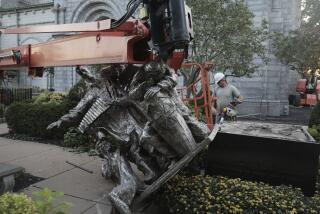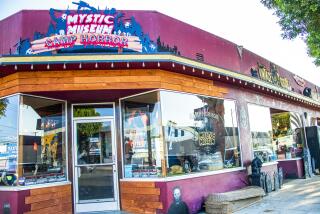Buddha is back: $1.5-million statue recovered, but mystery still surrounds theft

Los Angeles police recovered a stolen 250-pound Japanese Buddha statue valued at $1.5 million over the weekend and arrested a suspect in the case, authorities said Wednesday.
But the suspect is not believed to be the original thief, and mystery still shrouds the heist of the centuries-old artifact.
Paul Henderson, director of the Barakat Gallery in Beverly Hills where the statue was housed, said the bronze statue was found Saturday night stowed in the bed of a truck with no license plate.
âWeâre ecstatic, weâre shocked,â Henderson told The Times, adding that they were anticipating a much longer period to find the statue. He said an anonymous tip was what clued investigators in to its location.
The registered owner of the vehicle, identified as Justin Livick, 44, was arrested on suspicion of receiving stolen property. He was cited and released Sunday, according to online jail records.
The county offered to pay $1,000 to $2,000 to women in a custodial program who were allegedly sexually assaulted or exploited by a Riverside County deputy.
A Los Angeles Police Department spokesman said Livick was arrested in connection with the discovery of the statue, but he is not believed to be the original thief. No additional arrests have been made as of Wednesday, and the investigation remains ongoing.
The theft was reported the night of Sept. 18 at the gallery at 941 N. La Cienega Blvd.
Surveillance footage of the incident show a suspect pulling up to the rear gate of the gallery in a rental van. The individual, who remains unidentified, used a dolly and ropes to remove the statue from among hundreds of other ancient art pieces housed at the gallery and into the van before driving away.
âI prize it so much,â gallery owner Fayez Barakat said of the statue in a statement. âI had it in the backyard of my home, and when I moved into this gallery, I put it in the backyard of the gallery for everybody to admire and enjoy.â
Henderson said the statue dates to the 17th century. An inscription on the statue attributes the piece to the artist Tadazou Iinuma from a commission by Ryozen, a religious official. The piece, probably the centerpiece of a Buddhist temple, shows the Buddha as a young man with an athletic build, seated with his legs crossed and a crown and halo atop his head.
More to Read
Sign up for Essential California
The most important California stories and recommendations in your inbox every morning.
You may occasionally receive promotional content from the Los Angeles Times.












